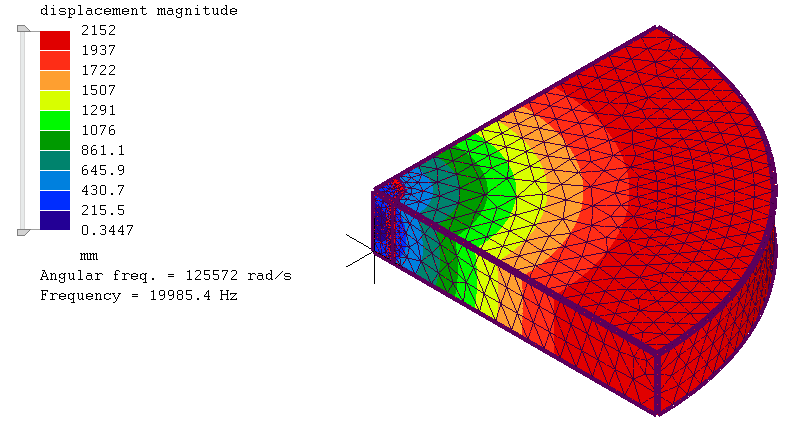Using frictionless supports with a bonded contact -- where not allowed?
I have a model (attached) of a disk (1/4 section) with a center stud. (Both parts are initially aluminum for theoretical confirmation.) The stud is TIE bonded to the disk. The lateral sides of the disk use frictionless supports. For the first radial vibration mode at 20 kHz, the FEA modal (mode 9) and theoretical frequency results are nearly identical.

Mecway's manual (p. 63) states, "Frictionless support typically can't be used if any of its nodes are part of a bonded contact, however you can use elastic support with a large stiffness to achieve the same effect as frictionless support sharing either master or slave nodes." However, frictionless supports with bonded contact works correctly in this model.
Therefore, for a model with TIE bonds, in what cases are frictionless supports not allowed? (Or alternately, what are the special cases where frictionless supports are allowed?)
Thanks,
Don C.

Mecway's manual (p. 63) states, "Frictionless support typically can't be used if any of its nodes are part of a bonded contact, however you can use elastic support with a large stiffness to achieve the same effect as frictionless support sharing either master or slave nodes." However, frictionless supports with bonded contact works correctly in this model.
Therefore, for a model with TIE bonds, in what cases are frictionless supports not allowed? (Or alternately, what are the special cases where frictionless supports are allowed?)
Thanks,
Don C.
Howdy, Stranger!
It looks like you're new here. If you want to get involved, click one of these buttons!

Comments
The Elastic option in bonded contact should work reliably with frictionless support.